I spent nearly six months traveling around Colombia in 2024 and 2025, visiting nearly every corner of the country. In this guide, I want to share with you a mix of my favorite places and places popular with both Colombian and foreign travelers. Some of these destinations are already well-known tourist destinations, while others are hidden gems that few foreign visitors have heard of.
I’ve divided the list into five categories based on location:
- Caribbean and the North,
- Medellin and the Western Coffee Region
- Bogota and the Eastern Region
- Southwest
- Southeast
Use this list to plan your Colombia itinerary!
Disclosure: This post may contain affiliate links. As an Amazon Associate and a Bookshop.org Associate, I earn from qualifying purchases. Please see this website’s Disclosure for more info.
The Caribbean Coast and Northern Colombia
Let’s start with the Caribbean region of Colombia, the most popular destination for international travelers and cruise ships. The region includes beach destinations, colonial cities, and hidden gems surrounded by lush mountains. The weather is hot, hot, hot and humid, humid, humid on the coast and pleasant in the mountains.
1. Cartagena
Cartagena was the first place on Colombia’s Caribbean coast that truly stole my heart. It’s the most beautiful big city in the country—Medellín and Bogotá don’t even come close. And the Walled City is a UNESCO World Heritage Site.
I spent most of my time just wandering the city’s cobblestone streets, past the colorful colonial houses and lively plazas with their history and street food vendors. When the heat would get unbearable, I’d pop into one of the fascinating museums or trendy cafes and restaurants.
You can also use Cartagena as a base for exploring the white sandy beaches and crystal clear waters of the Rosario Islands and Baru Peninsulas. Just check out Viator or Get Your Guide for tour ideas, or book with one of the many travel agencies around
I recommend three days in Cartagena. Here’s my recommended Cartagena itinerary:
- Day 1: Explore the Old Town + Museums + Walking Tour in the evening;
- Day 2: Beach Day by visiting Rosario Islands;
- Day 3: Day Trip out to the first free African town of Palenque + Cooking Class in the evening
I stayed at the budget Los Patios Boutique Hostel in Gesanami but if you want something more high-end, try Hotel Casona del Porvenir
2. Tayrona National Park
My second favorite spot on the Caribbean coast is Tayrona National Park, just an hour by bus from Santa Marta. It’s the perfect mix of adventure and relaxation—hiking through tropical rainforest (with the chance to spot monkeys, though I wasn’t so lucky) and then cooling off in the crystal-clear waters of what I think is the best beach in Colombia.
You just need one day to visit Tayrona National Park. Start your tour at 8:00 a.m. You’ll hike for 2.5 hours to Cabo San Juan. Bring your swimsuit! Then start hiking back to the entrance no later than 3:00 p.m. as the park closes at 6:00 p.m. Ideally, try staying overnight at Cabo San Juan, sleeping in a tent or hammock.
I stayed at the budget-friendly Eco Hostel Yuluka, but if you want something a bit fancier, try Posada la Ofelia or Senda Koguiwa ($$$)
3. Minca
Located an hour from Santa Marta in the Sierra Nevada Mountains is the tiny village of Minca. Here you’ll find ecolodges for all budgets, dotting the outskirts of the village or tucked deep in the jungle. This is another excellent place for both relaxation and adventure.
In the mornings, you can wander through a coffee farm learning about the coffee-making process. In the afternoons, hike to waterfalls like Marinka and Pozos Azul, where you can cool off with a swim in the pools below the falls. Then, spend the evenings watching the sun set over the mountains.
I’ve visited Minca twice. The first time was for three nights at a remote ecolodge called Masaya. The lodge was so remote that I couldn’t see many of the attractions in Minca, so I visited again on a day trip from Santa Marta.
Here’s my recommended itinerary:
- Day 1: Go on a hike
- Day 2: Visit a cacao farm or coffee farm + Pozos Azul + Marinka Waterfall
- Day 3: Relax in a hammock or by a pool
For a lodge closer to the village, I’ve heard only positive things about Costeno River Minca.
4. Rincon del Mar
Few people are lucky enough to make it to Rincon del Mar. Tucked away on the southern Caribbean Coast of Colombia, this tiny beachside village sees very few tourists. It’s the perfect place to get off the beaten path and still wake up right next to the water without it costing you an arm and a leg.
If you stay at the northern end of Rincon del Mar, you’ll have a quiet sandy beach and tranquil waters that are perfect for swimming. You won’t be harassed by vendors trying to sell you coconuts, trinkets, or massages. The seafood is affordable and was the best I had in Colombia.
You can also use Rincon del Mar as a jumping-off point to visit the San Bernardo Islands and Isla Múcura.
I stayed for three nights at Palenque Beach House, but if you want something much nicer, I would definitely recommend Dos Aguas Lodge
5. San Andrés and Providencia
San Andrés and Providencia are two more slices of Caribbean paradise, albeit more touristy than Rincon del Mar. Their white sandy beaches, crystal-clear waters, and unique marine life can’t be beat anywhere else in Colombia. Known for the “Sea of Seven Colors,” the water here shifts from turquoise to deep blue, creating a dreamlike setting for snorkeling, diving, or simply relaxing by the shore.
Beyond the beaches, you’ll experience a unique blend of cultures, including Afro-Caribbean, English, and Spanish influences, reflected in the islands’ music, food, and warm hospitality. Providencia, the smaller, less developed island, feels like a hidden gem, offering quieter beaches and lush landscapes. Visiting San Andrés and Providencia gives you the best of Colombian island life, with plenty of opportunities to unwind and explore the underwater world.
I have yet to make it to San Andrés or Providencia, but everyone I met who visited raved about it.
Recommended places to stay: Casa Royal Palm Inn ($$) or Hotel Reina del Mar ($$$)
6. The Lost City (Ciudad Perdida)
Looking for adventure and history during your trip to Colombia? The Lost City (Ciudad Perdida) is a must-visit! You’ll trek through dense jungles and challenging terrain to reach an ancient archaeological site, hidden deep in the Sierra Nevada mountains. The 4-6 day trek is an unforgettable experience. You’ll experience breathtaking views, encounters with local Indigenous communities, and a sense of discovery as you approach the mystical ruins of the Tayrona civilization.
Once you arrive at the Lost City, you’ll be rewarded with stunning terraces, stone structures, and an insight into Colombia’s rich pre-Columbian past. The combination of rugged adventure and historical significance makes this trek a unique way to connect with the country’s indigenous heritage and natural beauty.
I didn’t do the Lost City hike, but I met many travelers who did. Not one regretted their decision, and some said it was the best thing they did in Colombia. It’s a hard hike, and I just didn’t think I was up for it.
7. Santa Cruz de Mompox
The last destination in the Caribbean area of Colombia you must add to your itinerary is Santa Cruz de Mompox, a small town known for its timeless charm and colonial beauty. As you stroll through its peaceful streets lined with whitewashed buildings, you’ll feel transported back to Colombia’s past. Known as the “land of magical realism,” Mompox inspired Gabriel García Márquez with its unique blend of history and mystique.
In Mompox, you can enjoy a scenic boat ride along the Magdalena River, spotting local wildlife and lush landscapes. This town is also famous for its intricate filigree jewelry, crafted by local artisans using techniques passed down through generations. Mompox offers a rare look at Colombia’s rich heritage, making it an ideal stop for history lovers and cultural explorers alike.
Plan to stay at least 2 days in Mompox. Here is my recommended Mompox itinerary:
- Day 1: Wander around the town + Visit the cemetery
- Day 2: Do the Cienaga de Pijiño Tour
Recommended place to stay: La Gloria Hotel ($$-$$$), Portal de la Marquesa ($$$)
You might be interested in this Colombia post: The 10 BEST Tours You’ve Gotta Do in Medellin
Medellin and the Coffee Region
My favorite region of Colombia is the Coffee Triangle. It includes the departments (states) of Antioquia (technically not the Coffee Triangle but they grow lots of coffee too), Caldas, Quindio, and Risaralda. You’ve got lots of hiking, picturesque villages, and beautiful scenery. Of course, lots of coffee! A coffee tour is a must here! The weather is just about perfect as well–not too hot and never too cold.
8. Medellin
Medellín, known as the “City of Eternal Spring,” offers a unique mix of mild weather, vibrant culture, and a cosmopolitan vibe. You can see the city’s transformation in its thriving neighborhoods, where street art and innovative architecture make an urban landscape come alive. Medellín is also home to a range of fascinating museums and tours, like the Museum of Antioquia, the Memory Museum, and the Comuna 13 Tour, where you can dive into both the city’s artistic heritage and its complex history.
If you want to go beyond the buzz of the city, you can use Medellin as the perfect base for exploring nearby picturesque historic towns and natural wonders. Take a day trip to Guatapé, with its colorful town square and panoramic views from the towering El Peñol rock. For culture, nature, and history lovers, Medellín is one of Colombia’s best destinations.
I visited Medellin three times for over two weeks as it was an excellent place to work online. There are so many good coworking spaces. The tours in Medellin are also some of the best in Colombia.
I recommend four days in Medellin. Here is my recommended Medellin itinerary:
- Day 1: Walking Tour + Football Match;
- Day 2: Exotic Fruit Tour + Botero Museum + Memory Museum + El Poblado Tour
- Day 3: Comuna 4 or Comuna 13 Tour
- Day 4: Guatapé Day Trip
Recommended place to stay: Los Patios ($), Colink House Hotel ($$), or The Click Clack ($$$)
9. Guatapé
Guatapé is a must-visit for its vibrant streets, where every building is adorned with colorful, decorative murals. Wandering through this charming town feels like stepping into a painting. This artistic atmosphere makes Guatapé one of Colombia’s most picturesque towns, perfect for capturing photos and soaking in local culture.
A visit to Guatapé wouldn’t be complete without climbing La Piedra del Peñol, a massive rock offering sweeping views of the surrounding lake-studded landscape. The 740-step ascent is rewarded with panoramic vistas of blue-green waters and lush islands, a sight that leaves a lasting impression. Just a short drive from Medellín, Guatapé makes for an unforgettable day trip or overnight stay.
I stayed two nights in Guatapé, and stayed outside of the town on the lake. I wish I had stayed in the town of Guatapé instead. A day trip is more than enough.
You just need one day for Guatapé. Here’s my recommended Guatapé itinerary:
- Morning: La Piedra del Peñol
- Afternoon: Wander around the town of Guatapé
Recommended places to stay: Hotel Chromatic ($$) or Nomada Hotel Guatape ($)
10. Jardin
Jardín, a picturesque town nestled in Colombia’s coffee region, is known for its colorful architecture, vibrant town square, and stunning natural landscapes. Its charm lies in traditional coffee culture, where visitors can tour coffee farms and sample some of the world’s finest brews, all while surrounded by lush mountains.
For those who love nature, Jardín offers incredible outdoor adventures, including hikes to scenic waterfalls, like Cueva del Esplendor, and birdwatching opportunities to spot Colombia’s famous Andean cock-of-the-rock. The relaxed pace, friendly locals, and authentic Colombian atmosphere make Jardín a hidden gem, perfect for experiencing the beauty and warmth of Colombia’s countryside.
Plan to spend three days in Jardin. Here’s my recommended Jardin itinerary:
- Day 1: Wander around the town + La Garrucha + Birdwatching at Reserva Natural Jardin de Rocas
- Day 2: Go on a hike – Cueva del Esplendor or to the lookout points above Jardin or do the Seven Waterfalls Hike
- Day 3: Coffee tour + Hike to a waterfall closer to town
Recommended places to stay: Hotel la Casona ($), Hotel Valdivia ($$), or Casa Passiflora Boutique Hotel ($$$)
11. Hacienda Venecia Coffee Farm
Hacienda Venecia, located in Colombia’s coffee region, offers a unique stay surrounded by lush coffee farms and breathtaking mountain views. This charming coffee plantation provides an authentic Colombian experience, where you can learn about coffee production firsthand and enjoy guided tours of the estate. The peaceful atmosphere and scenic beauty make it a perfect getaway for relaxation.
Hacienda Venecia is also a perfect base for exploring Los Nevados National Park. The park is one of the best places to see Colombia’s unique landscape feature, the paramo. There are many nearby hot springs as well.
The Hacienda offers accommodations in three separate areas of the farm for all budgets. The main hotel is for guests who desire luxury. There’s another lodge for those with a budget of around US$100. Finally, for backpackers, there’s a hostel with dorm rooms. The hostel has a store for buying food and a kitchen for cooking. It even has a pizza oven!
I initially booked three nights at Hacienda Venecia, but I loved the relaxed vibe and nature so much that I stayed a week. I could have stayed two weeks!
Spend two to three days at Hacienda Venecia. Here’s my recommended itinerary:
- Day 1: Birdwatching + Coffee Tour + Cupping
- Day 2: Los Nevados National Park + Hot springs
- Day 3: Relax by the pool + Do some self-guided hikes around the coffee farm
12. Filandia
Filandia, another charming town in Colombia’s coffee region, is known for its colorful architecture and welcoming atmosphere. Often compared to nearby Salento but with fewer tourists, Filandia gives visitors an authentic experience of Colombian coffee culture with scenic landscapes and a relaxed pace.
The town’s Mirador de Filandia offers panoramic views of lush coffee fields, while nearby trails lead to waterfalls and scenic lookouts. You can explore coffee farms, craft shops, and quaint cafes that showcase the best of the region’s artisanal traditions. With its blend of natural beauty and traditional culture, Filandia is a hidden gem perfect for those seeking an off-the-beaten-path adventure in Colombia.
I intended to stay just one day in Filandia but ended up staying for three days.
You need at least one day in Filandia. Here’s my recommended Filandia itinerary for one day:
- Morning: Coffee Tour at Secretos del Carriel
- Afternoon: Mirador de Filandia + Wander around the town
Recommended places to stay: La Puesta del Sol ($$) or Ecohotel Monte Tierra ($$$)
13. Salento and the Cocoro Valley
Salento, located in Colombia’s coffee region, is a charming town celebrated for its colorful buildings, coffee culture, and breathtaking landscapes. Known as the gateway to the Cocora Valley, Salento offers access to towering wax palms, Colombia’s national tree, set against dramatic mountain scenery ideal for hiking.
Visitors can tour local coffee farms, learning about Colombia’s rich coffee-making heritage and sampling fresh brews. Salento’s vibrant town center, with artisan shops and bustling cafes, provides a welcoming glimpse into Colombian small-town life. For anyone looking to immerse themselves in Colombia’s natural beauty and coffee traditions, Salento is an unforgettable stop.
Plan for two to three days in Salento. Here’s my recommended Salento itinerary:
- Day 1: Wander around the town + Lookout point above the town
- Day 2: Cocora Valley
- Day 3: Kasaguadua Eco Tour + Premium Coffee Tour and Cupping at Finca El Ocaso Salento
Recommended places to stay: Viajero Salento Hostel ($), Hostal Familiar Jerico ($), La Cabana Ecohotel ($$) or Ecoresort Gran Azul ($$$)
14. The Páramo
Not many foreign travelers make it to the páramo. It’s too bad because it’s the most beautiful landscape in Colombia. The páramo is a unique and fascinating ecosystem found in high-altitude regions, above the tree line but below the snow-capped peaks. It’s basically a high mountain plain or grasslands. You will find some of the world’s most unforgettable flora, including the enchanting frailejones.
Do not leave Colombia without visiting at least one of the following national parks that contain the páramo ecosystem.
- Los Nevados National Natural Park – Located near Manizales, this park is home to several paramo ecosystems, including the famous Páramo de las Hermosas and Páramo de Ruiz. The park also features dramatic landscapes, glaciers, and active volcanoes. I visited as a day trip from Hacienda Venecia. Expensive but worth every penny!
- Purace National Park Santurbán Páramo – Situated in the southwestern region near the city of Popayan, this national park has not only a beautiful páramo, sulfur springs, and the feeding grounds of the Andean Condor, also it’s the home of the beginning of four rivers including the Magdalena.
- Chingaza National Natural Park – Just outside Bogotá, this park is known for its expansive páramo landscapes, misty forests, and crystal-clear lakes, making it a great place for hiking and wildlife spotting.
- Sumapaz Páramo – Located near Bogotá, Sumapaz is the largest páramo in Colombia and one of the most accessible. It offers breathtaking views, unique flora, and fauna, making it an ideal place for trekking.
- Cocuy National Park – Located in the Eastern Andes, the páramos here offer a more remote and rugged experience, with the added bonus of views of glaciers and high-altitude lakes.
These parks are hard to get to without a car. Many times the only option is an expensive tour. I managed to visit Los Nevados National Park on a tour from Hacienda Venezia and Purace National Park.
You can also visit Los Nevados on a multi-day hike from Salento. If you can manage it, seeing the paramó is worth it.
More travel articles about Colombia: The PERFECT Medellin Itinerary: 4 – 6 Days in the City of the Eternal Spring
Bogota and Eastern Colombia
Now, we’re moving eastward to areas of the country that are not so popular with international travelers but should be. The departments of Boyaca and Santander have some of the most beautiful landscapes in all of Colombia–mountains, valleys, and waterfalls. The towns are as picture-perfect as can be. The weather here is also as perfect as in the coffee region–never too hot or cold.
15. Bogotá
Bogotá, Colombia’s bustling capital, offers you a mix of history, art, and urban life at high altitude. In La Candelaria, the historic district, you’ll find colonial architecture, cobblestone streets, and cultural landmarks like the Gold Museum and the Botero Museum, filled with renowned art collections.
Surrounded by the Andes, Bogotá gives you stunning mountain views and outdoor adventures. Take a cable car to Monserrate for a panoramic city view or explore the vibrant local markets and trendy neighborhoods like Chapinero. With its blend of tradition and modern energy, Bogotá is a must-visit if you want to experience Colombia’s rich cultural landscape.
I spent only five days in Bogotá. Honestly, I could have spent more time in the city exploring different neighborhoods.
Plan to stay at least two days. Here’s an itinerary to make the most of your visit:
- Day 1: Walking Tour of La Candelaria + Gold Museum
- Day 2: Botero Museum + Food Tour + Cable Car to Monserrate
Recommended places to stay: Cranky Croc Hostel ($), Casa Dreamer ($), Magdalena Guesthouse ($$), Casa Legado ($$$)
16. Villa de Leyva
Villa de Leyva, one of Colombia’s most charming colonial towns, is renowned for its cobblestone streets, whitewashed buildings, and impressive main square—the largest in Colombia. The town’s well-preserved colonial architecture and relaxed atmosphere transport you back in time, offering a peaceful retreat from the hustle and bustle of larger cities.
The surrounding landscapes are equally captivating, with attractions like the Pozos Azules, a set of striking blue ponds, and the Iguaque National Park, home to hiking trails and ancient indigenous sites. Whether you’re exploring the town’s history or enjoying outdoor adventures, Villa de Leyva is a must-visit destination for anyone seeking beauty, culture, and tranquility in Colombia.
I spent three nights in Villa de Leyva, staying from Sunday to Wednesday. I loved the city so much that I could have spent a week or two. Avoid the weekends as the streets fill with weekenders from Bogotá.
For those short on time, plan to spend two days in Villa de Leyva. Here is my recommended itinerary:
- Day 1: Wander around the city + Eat Milhojas + Visit Museo Casa Antonio Nariño + Visit a winery
- Day 2: Casa Terracota + Pozos Azules + Museo Comunitario El Fossil + Muisca Archaeological Site
Recommended places to stay: Once Once ($), Pancha Mama Hotel Boutique ($$), or Hotel Casa Alcestre ($$$)
17. Barichara
Barichara, often called Colombia’s most beautiful town, will simply enchant you with its cobblestone streets, whitewashed houses, and tranquil atmosphere. The town’s well-preserved colonial architecture and stunning views of the surrounding mountains will make you feel like you’ve stepped back in time, offering the perfect setting for a peaceful getaway.
The nearby Camino Real offers a scenic hiking trail that leads to the village of Guane, showcasing the region’s natural beauty and offering glimpses of local wildlife. Barichara is also known for its vibrant artisan culture, where you can explore local crafts and enjoy traditional Colombian cuisine. For a mix of history, beauty, and outdoor adventure, Barichara is one of Colombia’s top destinations.
This is my favorite place in all of Colombia. I loved it so much that the first time I stayed a week and the second time I returned and stayed a month.
I recommend staying at least two to three days. Here is my recommended itinerary for Barichara:
- Day 1: Wander around the town + Paper Factory + Pottery Making Workshop
- Day 2: Hike from Barichara to Guane
- Day 3: Paragliding + Waterfall
Recommended places to stay: Nacuma Garden Hostel ($), Florre Blossom ($$), or Casa Barichara ($$$)
You might be interested in this South America travel post: The 15 BEST Places to Visit in Ecuador
Southwestern Colombia
This region was closed to travelers during the Civil War, so it’s still new to the travelers’ circuit. If you make it here, you will be rewarded with pretty towns and cities, beautiful scenery, the best food in Colombia, great coffee, and a rich history.
18. San Agustin
San Agustin, a UNESCO World Heritage site, is famous for its ancient archaeological wonders and stunning natural beauty. The town is home to the mysterious San Agustin Archaeological Park, where you can explore centuries-old statues, tombs, and sculptures that date back to pre-Columbian times, offering a glimpse into Colombia’s rich indigenous history.
Beyond its cultural significance, San Agustin is surrounded by lush landscapes perfect for adventure seekers. You can hike through the Magdalena River Canyon, visit the Salto de Bordones waterfall, or enjoy birdwatching in the region’s biodiversity-rich environment. Whether you’re a history enthusiast or nature lover, San Agustin’s unique mix of archaeology and natural beauty makes it one of Colombia’s top destinations.
I initially planned to stay for three days in San Agustin but loved it so much that I stayed a week. It’s a pleasant, non-touristy town with lots of hikes and good food.
You need at least two days in San Agustin. Here is my recommended San Agustin itinerary:
- Day 1: Horseback ride to 3 archaeological sites + Archaeological Park
- Day 2: Jeep Tour to more archaeological sites and the Magdalena River
Recommended places to stay: Hostal Bambu ($) or Hotel La Casa de Francois ($-$$)
19. Popayán
Popayán, known as Colombia’s “White City,” invites you to step back in time with its charming colonial architecture and beautifully preserved whitewashed buildings. As you wander the cobblestone streets, you’ll find historic churches, quaint plazas, and an atmosphere rich with tradition. Popayán’s Holy Week celebrations are particularly famous, drawing visitors from all over for its elaborate processions and vibrant local culture.
Beyond its historic charm, Popayán is a gateway to Colombian cuisine. The city is recognized by UNESCO as a Creative City of Gastronomy, and you’ll love sampling traditional dishes like empanadas de pipián, tamales de pipián, and salpicon payanes. Popayán is a perfect stop for history buffs, food lovers, and anyone wanting to experience authentic Colombian culture.
I ended up staying in Popayán longer (initially two days but ended up being a week) than I intended due to a truck drivers strike that shut down the roads in parts of Colombia.
Plan on spending two to three days in Popayan, including day trips. Here is my recommended Popayan itinerary:
- Day 1: Walking Tour of Popayan
- Day 2: Visit the Tuesday market in Silvia
- Day 3: Purace National Park
Recommended places to stay: El Caracol ($) or Hotel La Plazuela ($)
20. Tatacoa Desert
In the Tatacoa Desert, you’ll find one of Colombia’s most unique landscapes—an otherworldly terrain filled with red and gray canyons, natural rock formations, and endless skies. It’s the ideal spot for photography and exploration, with winding trails leading you through an unforgettable mix of arid beauty and surreal scenery.
At night, the Tatacoa transforms into a stargazer’s paradise. With minimal light pollution, it’s one of the best places in Colombia for observing constellations and planets. Join a local stargazing tour or simply lay back and enjoy the vastness of the night sky. A visit to Tatacoa is a chance to escape the usual tourist crowds and experience Colombia’s natural wonders in a truly special way.
I stayed two nights in the Tatacoa Desert. It’s hot and the tours are expensive.
I recommend staying one night, arriving in the afternoon and leaving the day next day in the afternoon.
- Afternoon and Evening: Red Dessert + Observatory to Stargaze
- Morning: Grey Dessert + Valley of Ghosts + La Piscina + Depart in afternoon
Recommended places to stay: Hotel Colonial Villavieja ($)
Southeastern Colombia
Last on this list is the least visited part of Colombia: the far east. This includes two distinct areas: The Amazon and the Llano. Getting to both Colombia destinations requires you to fly. Going overland by bus is not completely safe, nor is it very comfortable. If you do make it here, you’ll be rewarded with some of the most unique scenery and wildlife on the planet.
21. The Amazon Rainforest
Visiting the Amazon in Colombia offers you a rare chance to experience one of the world’s most biodiverse regions. Here, you can explore lush rainforests, take riverboat tours, and spot incredible wildlife—from pink river dolphins to colorful parrots and monkeys. The Amazon’s vastness and beauty make it a thrilling destination for nature lovers and adventure seekers alike.
Beyond its natural wonders, the Amazon also connects you with Colombia’s Indigenous cultures. Guided tours offer insights into traditional practices, local knowledge of the rainforest, and sustainable ways of living. Whether you’re hiking through jungle trails, bird-watching, or learning about medicinal plants, a visit to the Amazon Basin is an unforgettable journey into Colombia’s wild and cultural heart.
I never made it to the Amazon in Colombia. However, everyone I met loved their experience.
My friend Camilo from Barichara recommends after flying into Leticia, take a boat for about 80 kilometers down the Amazon for about 80 kilometers to the car-free village of Puerto Nariño, a tranquil place to base yourself for exploring the Amazon and spotting pink dolphins in Lago Tarapoto. There are eco-lodges that you can stay at, and they will arrange tours for you.
22. Caño Cristales
Caño Cristales, known as the “River of Five Colors,” is a natural wonder that should be on every traveler’s list. This stunning river, located in the Sierra de la Macarena National Park, comes alive with vibrant hues of red, yellow, green, and blue, thanks to the unique combination of aquatic plants and the river’s crystal-clear waters. Visiting Caño Cristales is a once-in-a-lifetime opportunity to witness one of nature’s most colorful spectacles.
You can explore the river on guided tours, which take you to several breathtaking spots where you can swim in crystal-clear pools, walk along scenic trails, and marvel at the beautiful colors. The surrounding landscapes, with their dramatic hills and lush jungle, add to the magic of this remote and pristine destination.
I tried visiting Caño Cristales, but it’s difficult and expensive to get to. You need to be on a guided tour. I tried booking too late in the season to see the colors at their best (June to November, with September and October being the absolute best times). Many tours are only in Spanish with guides who speak very little English.
It’s best to visit Caño Cristales on a tour of two to five days. You’ll need to first fly to Macarena.
Final Thoughts
That’s the 22 best places to visit in Colombia!
Did I leave any destinations off this list? Yes, I did!
I left off Cali, San Gil, and the Pacific Coast of Colombia. I haven’t been to Cali and I still don’t know why I would go. It’s just another big city. If you love dancing, then it’s probably for you. San Gil is supposed to be a great base for adventure sports, but I’m not into that. I really wanted to add the Pacific Coast to this list as I’ve been a few people who’ve visited and absolutely loved it. The area is one of the least safest in Colombia and the main reasons to go are whale watching and surfing. I missed whale watching season and I don’t surf.
I hope this list of the 22 best Colombia destinations helps you plan your Colombia itinerary or at least inspires you to visit the country!
Thanks for reading! If you have questions and comments, please leave them in the Comment Section below. If you liked this Colombia blog post, share the love on social media! Gracias!
Hasta luego!
Are you on Pinterest?
Hey! How about saving one of these pins to Pinterest to read for later?
And feel free to follow me on Pinterest, where you’ll find lots of travel articles for everywhere around the world.
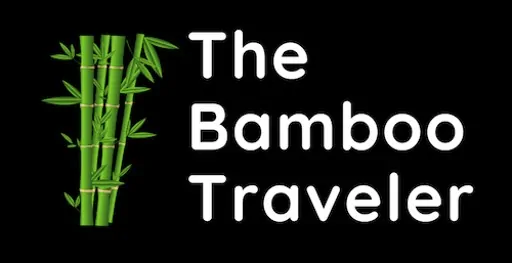
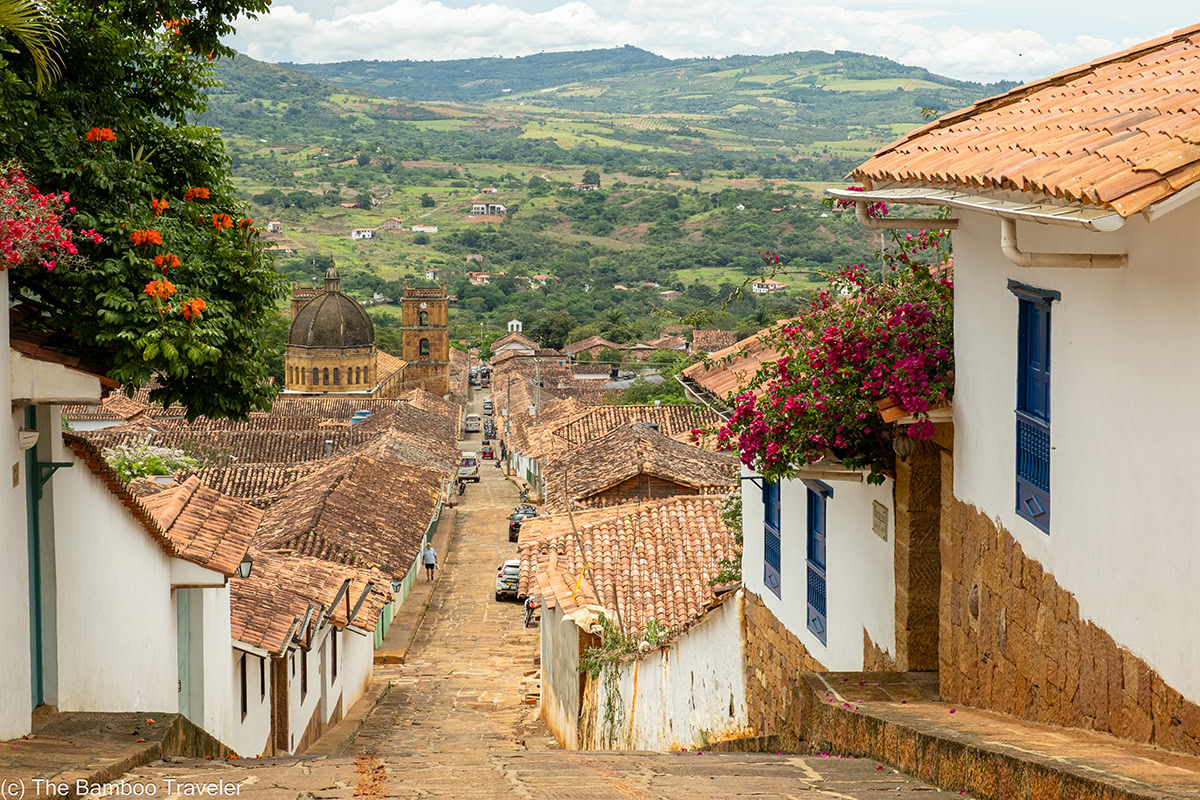
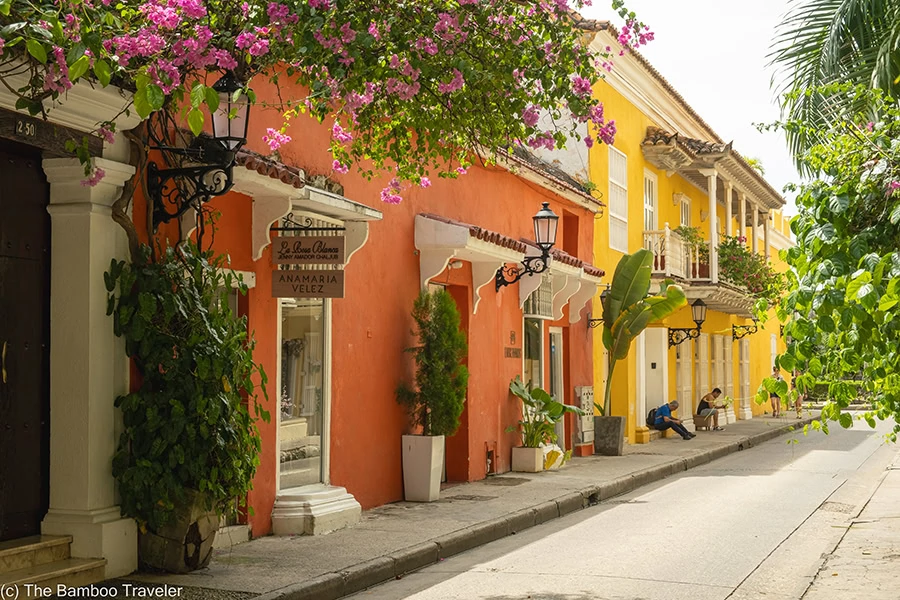
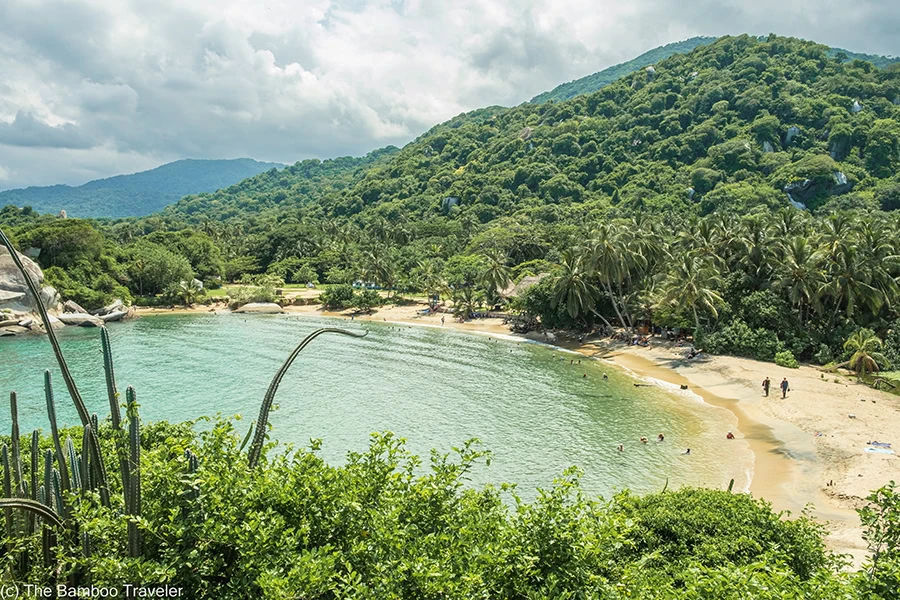
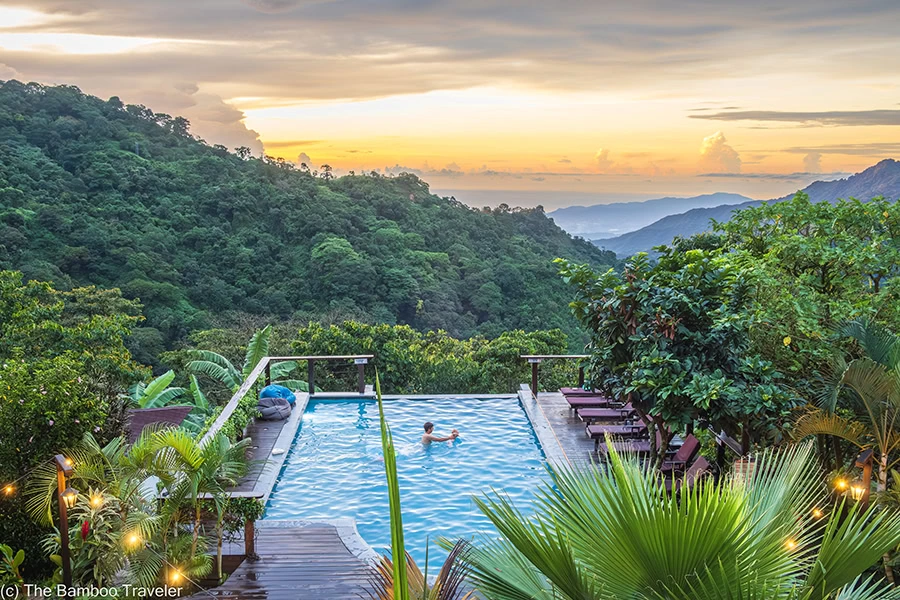
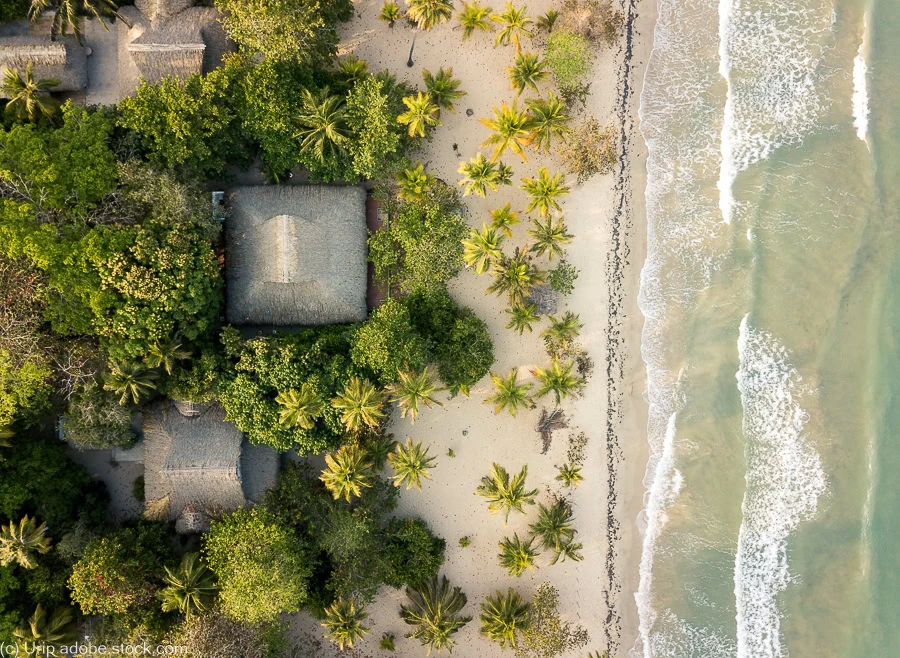

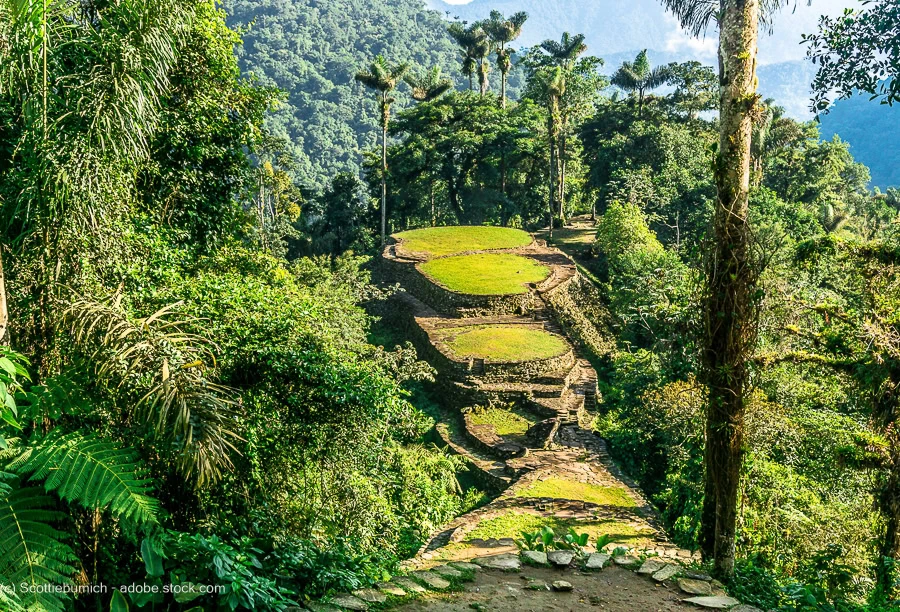
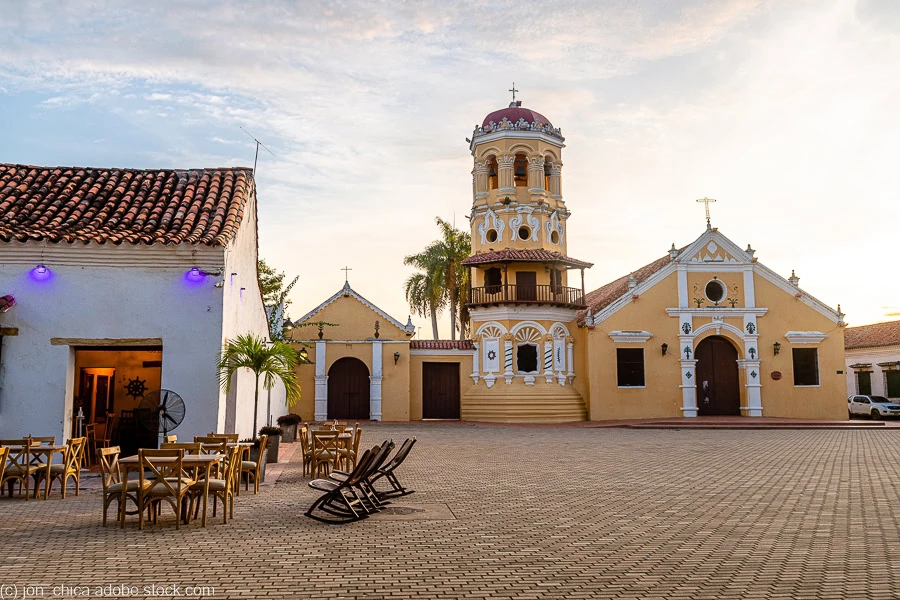
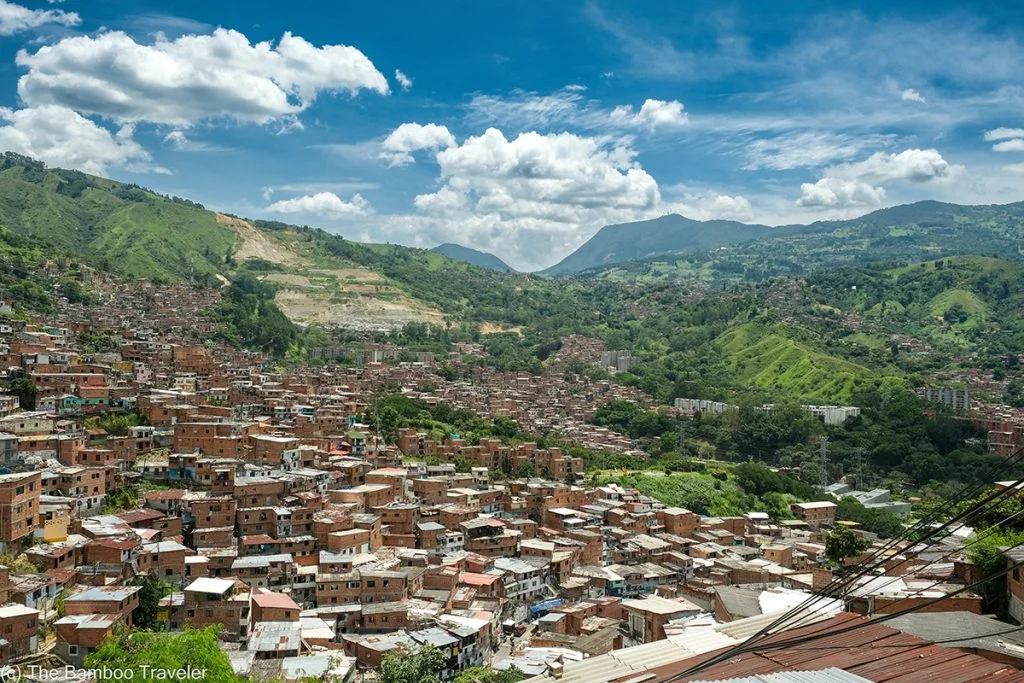
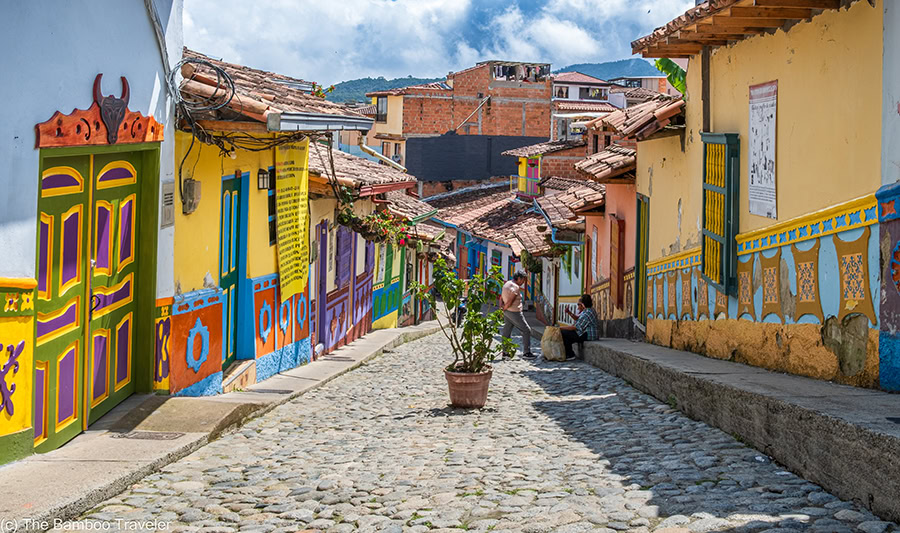
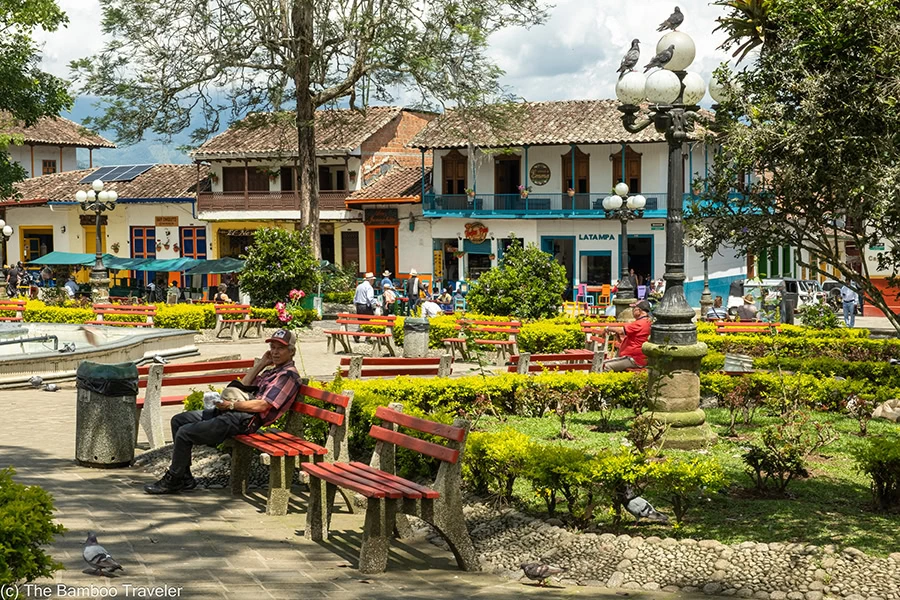


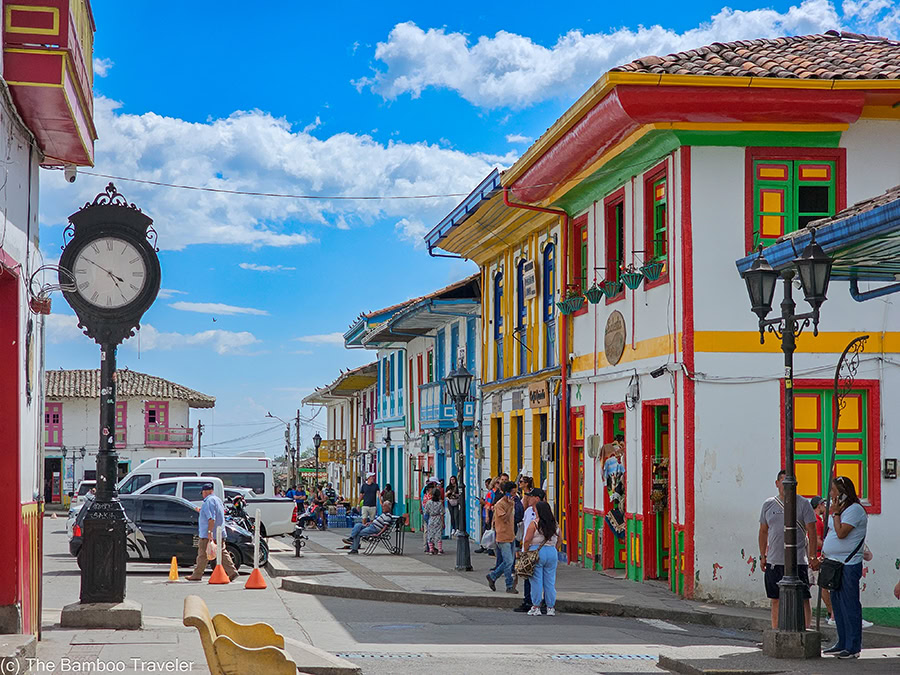

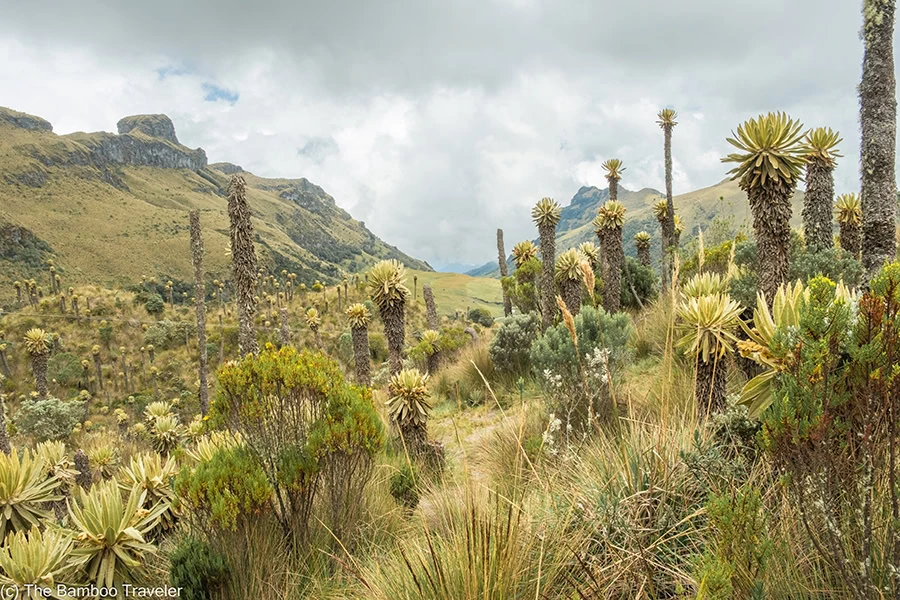
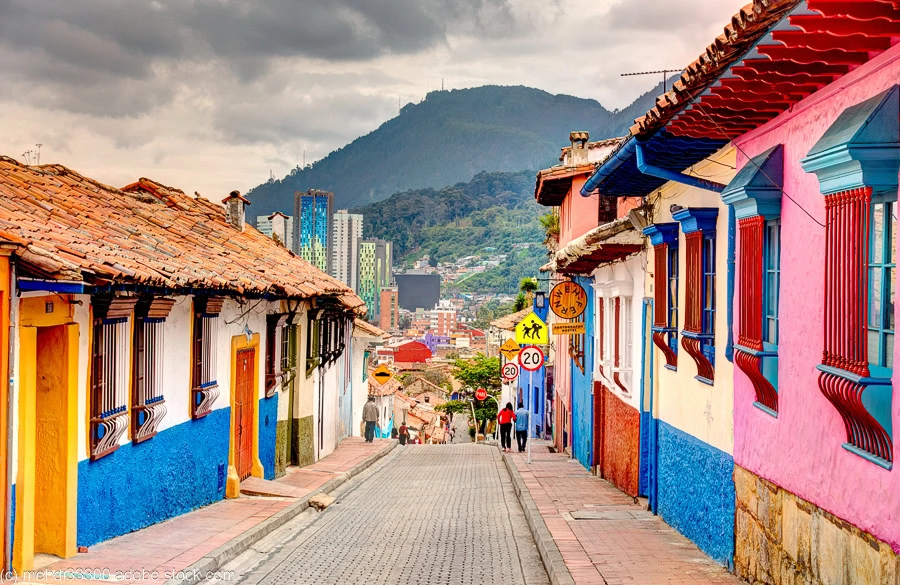
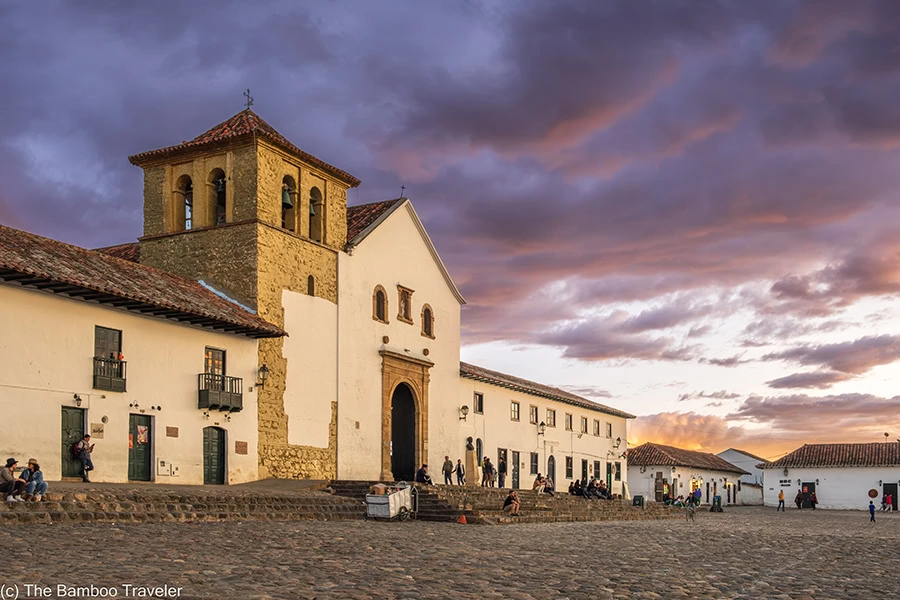
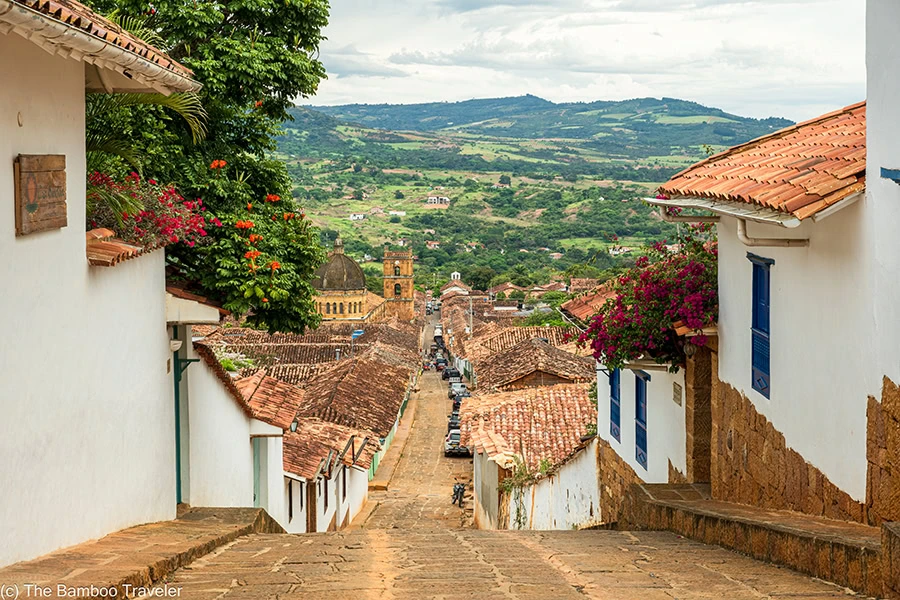

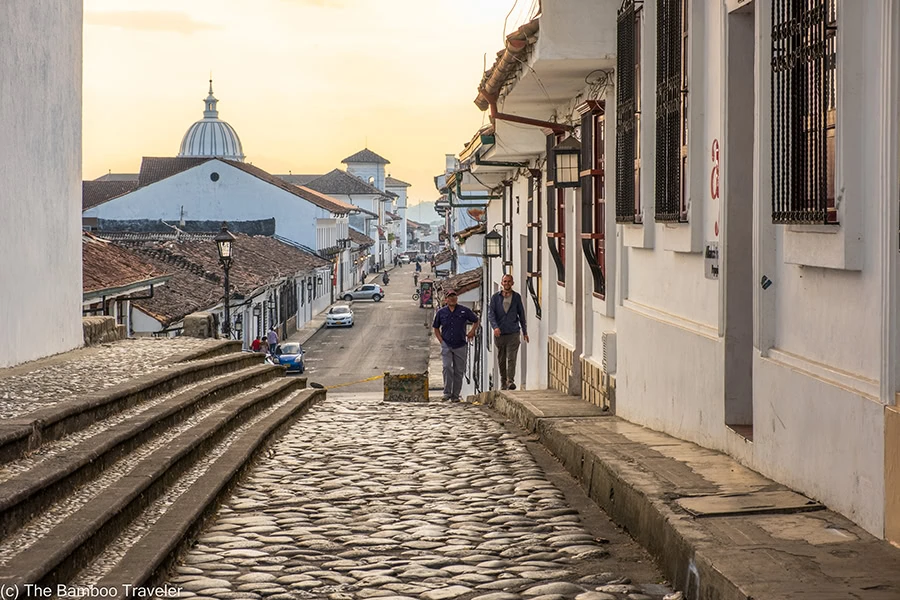

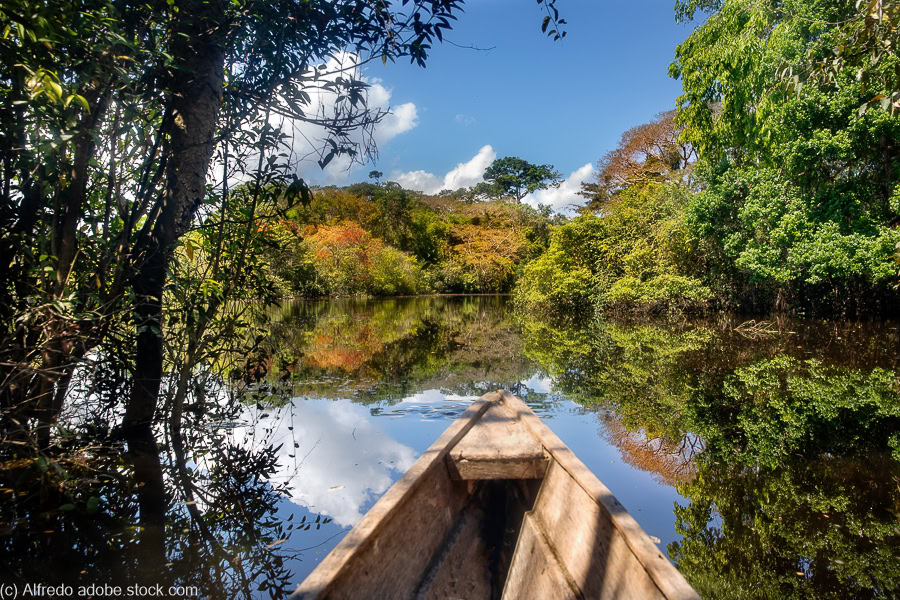

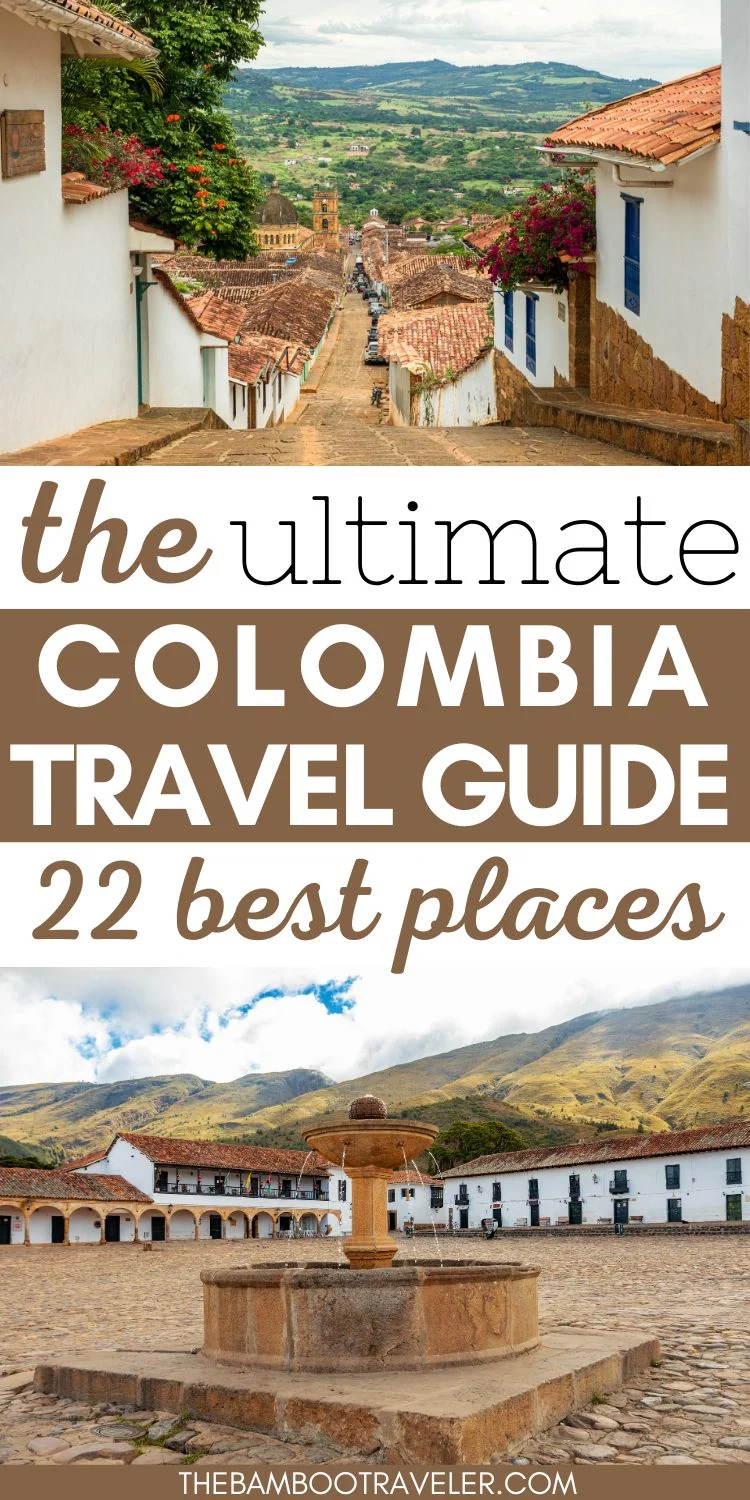
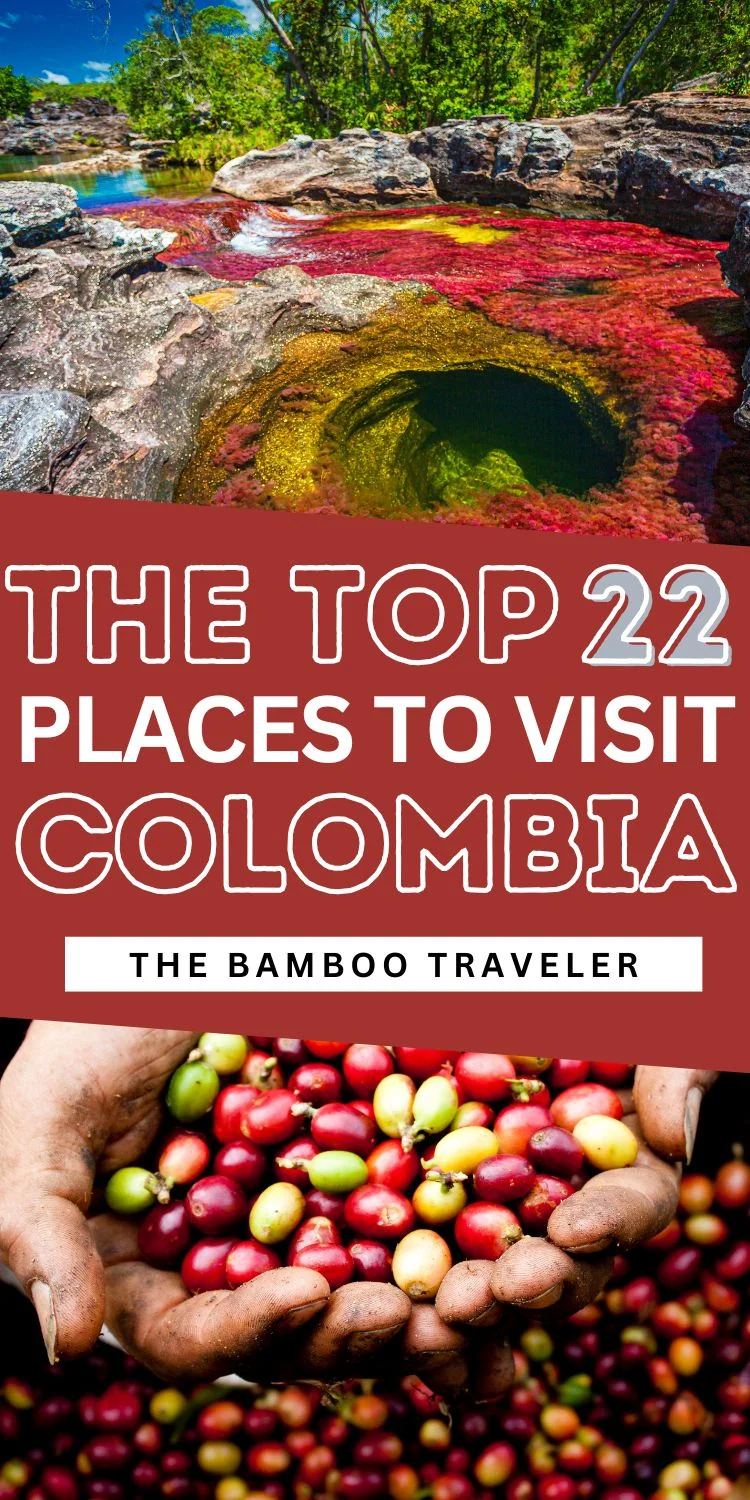



0 Comments